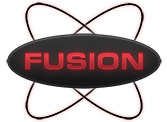Fluxes for Fusion Paste Brazing Alloys have been formulated to complement high-speed, automated brazing operations where quick removal of tenacious surface oxides at high temperatures is required. Generally, brazing fluxes exhibit a highly corrosive nature. Thus, their residue after brazing should be removed whenever possible.
PLEASE NOTE: Filler metal selected must have a liquidus temperature within the fluxing range specified.
Brazing Paste Flux/Binders
|
Flux System |
Description |
Flux Range |
| STL | Very active, free-flowing flux, for use on both ferrous and non-ferrous base metals. Strong oxide removal capability enables use on many “hard- to-braze materials” like cadmium-oxide and nickel-chrome. Unique blend of flux constituents enable wide temperature activation window and long flux life. | 1000 – 1600°F (538 – 871°C) |
| BHL | Lower fux content with oxide removal similar to STL. Binder has good adhesion to part, improved slump properties, and increased restrictiveness. Formulation permits higher alloy loading which makes it ideal for a wide range of applications ranging from tube to fitting, to electrical contact applications where alloy coverage and large fillets are preferred. | 1000 – 1600°F (538 – 871°C) |
| LHK | Fluxing properties similar to STL. LHK is formulated to have a more restrictive flow than STL in molten state, while maintaining excellent joint penetration and capillary pull through. Ideal for pairing with a wide variety of BAg and BCuP alloys. | 1000 – 1600°F (538 – 871°C) |
| MHK | Lower flux content with oxide removal similar to LHK. Binder has good adhesion to the part with some increased restrictiveness over LHK, resulting in a smaller post braze footprint. Pull through is generally not as good as LHK. | 1000 – 1600°F (538 – 871°C) |
| LEE | Similar in both binder and flux constituents to WSK, LEE is ideal for fast heat cycles, including induction with slightly less smoke generation. It maintains minimal hot and cold slump characteristics with good capillary flow. The restrictive nature of binder helps minimize post braze footprint which makes it a good choice for post braze plating. | 1000 – 1600°F (538 – 871°C) |
| SL5 | SL5 has a similar binder backbone and adhesive properties to STL, however, in an effort to identify a more environmentally sustainable option for the brazing industry, Fusion SL5, free-flowing flux formulation is considered CMR-Free. It maintains minimal hot and cold slump characteristics with good capillary flow. | 1000 – 1500°F (538 – 871°C) |
| STN | Very active, free-flowing flux, provides excellent wetting and alloy spread similar in nature to its FB3-A sister, STL. The STN binder formulation is optimized for higher process temperatures and longer heat cycles typically required for “hard- to-braze materials” as well as many carbide applications. | 1000 – 1700°F (538 – 927°C) |
| STK | STK is a more restrictive silver brazing flux for use in prolonged heating cycles and when maximum activity at higher process temperatures are required. It is an excellent choice for stainless steels and carbides and is often chosen for use with suitable silver filler metals when brazing and heat-treating operations are combined. | 1000 – 1700°F (538 – 927°C) |
| WSK | WSK is specially formulated for long term stability when packaged in cartridges and can handle higher loading levels of most alloys without impacting paste stability. WSK has minimal hot and cold slump characteristics with good capillary flow. The restrictive nature of the binder, along with possible higher alloy loading levels, help minimize post braze footprint which makes it a good selection for plating parts after brazing. | 1000 – 1600°F (538 – 871°C) |
| 2MJ | 2MJ is the next generation DMX product specifically designed for higher alloy loading, cartridge stability, and maximum shelf life. It is extremely restrictive with very little capillary flow so it is best used when sandwiched inside a joint. It maintains good activation life through high temperatures and long cycle times making it a good choice for stainless steel and carbide tooling. Due to high alloy loading the residue is minimal but any residue is typically more challenging to remove than with STK or STN. | 1000 – 1700°F (538 – 927°C) |
| BMW | Very high temperature borate flux with good capillary flow and wetting characteristics. BMW has good adhesive properties to minimize cold and hot slump. Often paired with brass filler metals for use on steel, brass, and copper base metals when the joint requires a smooth fillet and good capillary flow (e.g. fishhooks and musical instruments). It can be used with some of the lower temperature nickel filler metals provided optimum process conditions (i.e. fast heat cycle like induction) |
1400 – 2200°F (760 – 1205°C) |
| BMO | More restrictive version of BMW with good adhesive properties and minimal cold and hot slump. BMO is often used with brass and bronze filler metals for carbide and steel applications (i.e. circular saw teeth) however, it can work with some higher temperature, longer melting range silver alloys. | 1400 – 2200°F (760 – 1205°C) |
| BMA | Most restrictive system, with excellent part adhesion, makes BMA a good choice for vertical joints where gravity assist is not favorable. The post braze residue is tougher and more resistant to thermal shock than the BMW or BMO systems. | 1400 – 2200°F (760 – 1205°C) |
| JAN | Similar to BMW in activation temperatures and physical properties, JAN is a higher fluxed system which enables even longer activation life. Ideal for more prolonged heating cycles when paired with more sluggish alloys. | 1400 – 2200°F (760 – 1205°C) |
For more details on the above products, download our Paste Brazing Brazing & Soldering Alloys brochure.
USA: (440) 946-3300
EUROPE: +44 (0) 1279 443 122
Find Your Fusion Rep: USA | AMERICAS | EUROPE | ASIA-PACIFIC
Fusion Equipment in Action: Applications & Videos >>


